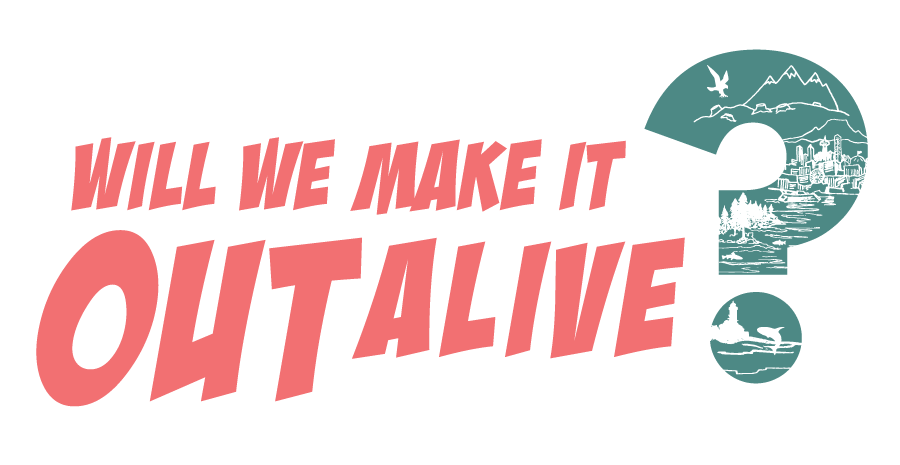Episode 12: Ghost Ships and Rail Dock Ribs
/Legacies of Pollution in the Pacific Northwest
In this episode we learn about how sound travels on water, creosote pilings and ghost ships, how the Samish Nation uses GIS in its marine debris removal efforts, and how to report creosote pilings or derelict vessels in the Puget Sound. For this episode we contacted Lalena Amiotte, Washington Department of Natural Resources (DNR) Aquatic Resources Division’s Habitat Stewardship Unit Supervisor, and researched other details from the internet.
People can hear all the way across the lake!
Apparently Sound Carries on Water?! Who Knew...
Amy the Poop Detective tells us how she learned that sound carries on water. She also drops some facts about Lake Cushman in Washington while she’s at it!
Arrrh! Get your ships out the water before the ghost captains come!
Derelict Vessels
In this episode we discuss what pirate/ghost ships are, why we don’t want them in the water and what you can do if you see one or if you are the proud owner of one. These are otherwise known as derelict vessels. Watch this video for more information!
Disposing of these derelict vessels can be expensive. ARRRR...but removing these pirate ghost ships is cost effective, it prevents pollution and removes navigational hazards from the water, mateys!
The removal of derelict vessels both protects the environment and removes physical hazards and barriers from the water. The San Juan County Derelict Vessel Program is one that was mentioned in the episode, along with the DNR Derelict Vessel Removal Program and the voluntary Vessel Turn In Program (see this fact sheet to determine if you’re eligible to apply). There is also a map of boat disposal sites in Western Washington. Make sure you contact individual disposal sites prior to just bringing in your old boat. Many of them have limited hours and some even have special types of boats that they deal with!
DNR has an inventory of pirated and ghost ships and vessels. This inventory started at about 100 boats at the start of the last biennium…but the total inventory had grown to 154 as of April 2019 despite the state removing around 100 over the past two years!!! Otherwise known as a revolving door of pirate/ghost ship fun…not to be confused with the revolving door of creosote and marine debris fun!
Make sure there aren’t any stowaways before disposal!
While you can report your sightings in Washington or Oregon by filling out this form, we recommend you check out MyCoast app (see link below in the citizen science section). In addition, some counties in Washington have additional reporting programs:
Contact the King County Sheriff’s Office Marine Unit at (206) 296-3311 or (206) 477-3790. Important details to report include registration numbers, location and condition of the potential vessel of interest.
Snohomish County - Junk Vehicle and Boat/RV Disposal Programs
Creosote Pilings
Also discussed in this episode is creosote, which is a wood preservative that has been commonly used in marine waters due to its ability to prevent wood from rotting. It’s typically composed of coal tar, which may contain more than 300 chemicals. Creosote-treated materials continue to leach hazardous chemicals into the water and sediments causing toxic conditions for organisms that live around them.
DNR has a creosote program that inventories and removes creosote pilings from the marine environment. They partner with local groups, governments and private property owners to remove treated wood located on public and private lands throughout Puget Sound (see our GIS section below for an example).
According to the Encyclopedia of Puget Sound, creosote removal is not without its own concerns. Also, many of these pilings are covered in sea life and while some of that can be removed and relocated, like crabs and starfish, sadly, some of them like giant barnacles cannot be removed without killing them. So, even creosote removal must be done in a thoughtful way that minimizes potential future impacts to marine life.
What can you do? Report creosote pilings or beach debris in the MyCoast app...learn more in our citizen science section below!
GIS Time!
The Magical Mapper talks about some great work being done by the Samish Tribe, in partnership with many others, to clean up marine debris. They use GPS units to gather information during their annual shoreline survey, and they may have used hot spot analysis to find beaches with the highest concentrations of debris (a couple of GIS Tools we discussed in previous episodes). From 2014 through 2018 they removed 702,350 pounds of creosote treated wood and other marine debris! Head over to the GIS Blog for more information about the Bayesian network relative risk assessment model, which the Samish Tribe is planning to use in future efforts. Also check out their 2017 Esri Storytelling with Maps Contest award winning story map!
Citizen Science
Cat looking for pirate ships
Want to help out with reporting marine debris or creosote (or king tides or storm surge or just beach pictures), but don’t have a lot of time? It’s ok, there’s an app for that! Take a picture in the MyCoast app, and that photo (which the camera/app tags with the coordinates) will go straight to the folks at the DNR Marine Debris Removal Program, letting them know what was spotted and where it is.
Thanks for joining us!
Please don’t forget to rate, review and subscribe on Apple Podcasts, Stitcher, or wherever you get your podcasts. Please let us know what you think in the comments below! If you don’t have time to listen today, you can always download the episode and have it ready to listen to soon!
***Also Episode 2: Victoria’s Pooping habits is now available on our YouTube channel; Will We Make It Out Alive Podcast, which is even more hilarious that just listening to us! Pop on over and give it a watch-listen, tell us what you think and please, please SUBSCRIBE!






